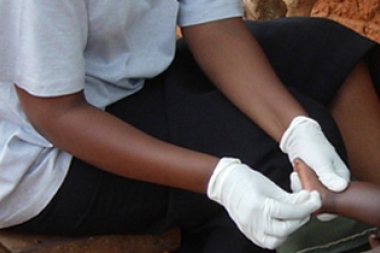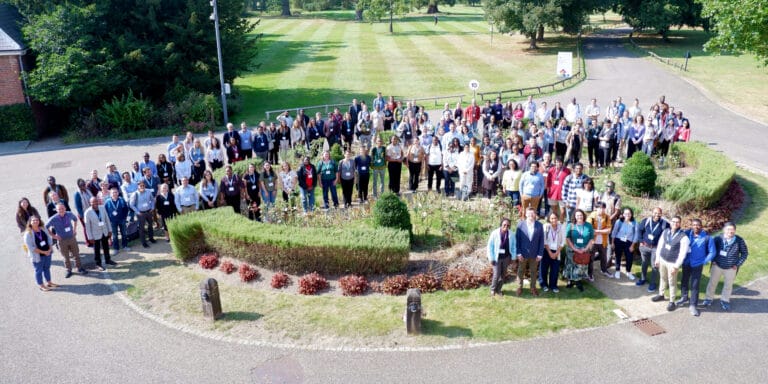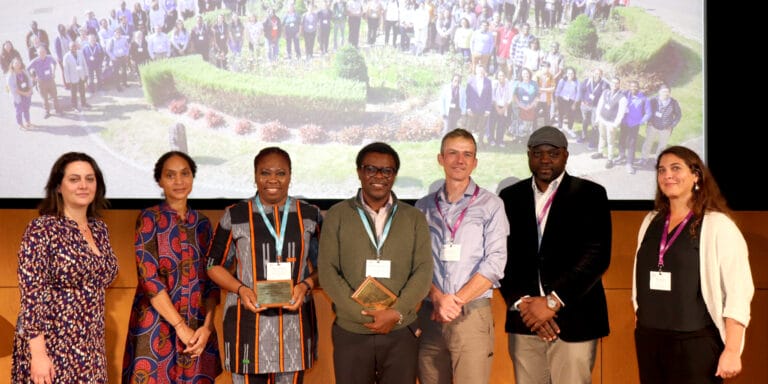
“In malaria it’s often not possible to replicate findings, because of heterogeneity in host and parasite populations,” says Professor Dominic Kwiatkowski of the University of Oxford and the Wellcome Trust Sanger Institute. “We’ve broken down that hurdle.”
The consortial project 1 (CP1) study of genetic variants associated with cases of severe malaria integrated data from almost 30,000 participants across multiple locations in Africa, Asia and Oceania. This allowed insights into the evolutionary battle between the malaria parasite and human populations that could not have been achieved by smaller studies in each location.
MalariaGEN partners collected samples from 11,890 children and adults with severe Plasmodium falciparum malaria – either cerebral malaria (coma) or anaemia or both – and 17,441 healthy controls matched with the cases by ethnic group.
The samples were collected in the course of individual studies in Burkina Faso, Cameroon, The Gambia, Ghana, Kenya, Malawi, Mali, Nigeria, Tanzania, Vietnam and Papua New Guinea.
“This was a massive collective effort spanning nearly a decade. Hundreds of people from across our many study sites—researchers, clinicians, field workers, ethicists and others—worked together to build this unique data resource,” says Dr Kirk Rockett, Research Manager at the University of Oxford and a founding member of the MalariaGEN Consortium.
All the research groups used a standardised method of describing the symptoms of the cases, and uploaded their data to a common system for analysis. “We have developed new statistical tools that allows for the fact that you may not see the same thing at every site,” says Kwiatkowski.
Several genetic loci are already well known to be associated with resistance to severe malaria. Children who inherit one copy of the sickle cell mutation have a ten-fold reduction in their risk of severe malaria, which accounts for the high frequency of this mutation even though it causes serious illness in those who inherit it from both parents. Those who have the O blood group also enjoy significant protection.
The study confirmed these findings to a very high level of confidence, across all the locations in the study. “That reassures us that our ability to capture real biological effects is very strong,” says Kwiatkowski. In contrast, more than 20 previously reported associations could not be confirmed. Others appeared to have some influence at some locations but not others.
“The study is important because it has enabled us to evaluate studies that have been published so far,” says Kwiatkowski. “We have been able to distinguish genuine differences from differences due to different methodology or experimental error.”
The study also revealed an intriguing and unexpected finding. Carriers of a single copy of the gene variant that causes a condition called G6PD deficiency had been thought to be protected in a similar fashion to sickle cell carriers. However, this study found that although G6PD carriers were protected against cerebral malaria, they were more likely to suffer from anaemia as a complication of malaria.
“Overall, G6PD is not providing strong protection,” says Kwiatkowski. “This very common human polymorphism turns out to have more complex effects than we supposed, in ways that we don’t fully understand.”
It is not obvious how a mutation with such contrasting effects might have emerged during human evolution. One possibility is that it became common as a result of ‘balancing selection’ by a different malaria parasite, Plasmodium vivax, which no longer exists in much of Africa. The mutation would then persist there merely as an evolutionary throwback.
“Life has got more interesting,” says Kwiatkowski. “In different places, the evolutionary battle between host and parasite has played out in different ways. And it’s clear that in order to understand resistance, you need to amalgamate data from many places. Our study has provided a platform for the discovery of new loci associated with resistance to malaria.”
Publication
Malaria Genomic Epidemiology Network. Reappraisal of known malaria resistance loci in a large multicenter study. Nat Genet. 2014 Nov;46(11):1197-204. doi: 10.1038/ng.3107. Epub 2014 Sep 28.
Consortial Project 1 (CP1)
This consortial project addresses the question of why, in regions where every individual is repeatedly exposed to malaria parasites, some people die from the infection while others survive. Each partner study has collected detailed clinical data and DNA from people with severe malaria, i.e. those who develop life-threatening clinical complications such as cerebral malaria and severe malarial anaemia.



